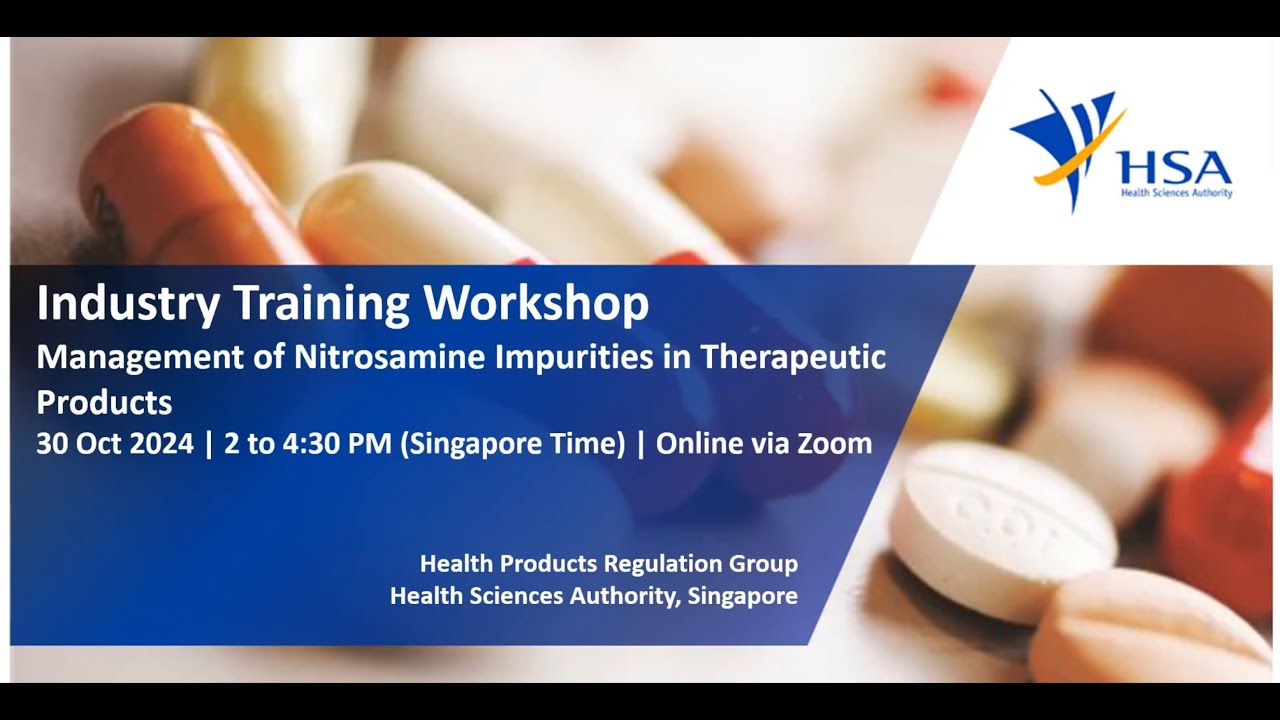On 30 October 2024, the Health Sciences Authority conducted an online industry training workshop on the management of nitrosamine impurities in therapeutic products. The workshop clarified HSA’s current approach, recommendations, and regulatory requirements for managing nitrosamine impurities in therapeutic products.
that’s great
thank you Yosuke for continued support.
You can find additional information on the HSA page.
https://www.hsa.gov.sg/announcements/regulatory-updates/industry-training-workshop-on-(i)-product-defect-reporting-and-recall-procedures--and-(ii)-management-of-nitrosamine-impurities-in-therapeutic-products
Q1. Why is an interim acceptable intake (AI) exceeding 1500 ng/day permitted for nitrosamines classified as CPCA Category 5, but not for those in Category 4, despite both categories being allocated an AI of 1500 ng/day?
Q2. Are there any cases so far that suggest that nitrosamine formation occurs at a higher rate under Zone IVb conditions compared to Zone II conditions?
Q3. Which data sets should be evaluated when considering the nitrosamine testing control strategy? Only the data at release, or both the release and shelf-life data?
Q4. Does the method validation report need to be submitted to HSA?
Q5. For a product with a potential risk of a nitrosamine drug substance-related impurity (NDSRI), what alternative methods, apart from confirmatory testing of the drug product, are deemed acceptable to substantiate that the product is devoid of the nitrosamine? Does a supplier declaration that excipients are free of nitrates/nitrites suffice?
Q6. What approach would HSA recommend if a monograph method/any reference for the nitrosamine impurity is unavailable?
Q7. The situation regarding nitrosamine in therapeutic products keeps evolving and recommendations keeps changing. Consequently, risk assessments conducted previously may no longer be applicable and require re-evaluation. What is the anticipated timeframe for conducting these re-evaluations?
Q8. For drug substances certified by the EDQM, can it be presumed that the nitrosamine risk associated with the drug substance has been adequately addressed?
Q9. Can drug product manufacturers conduct nitrosamine testing for every batch on release, and skip testing approach for stability batches?
Q10. In cases where the drug substance manufacturer has conducted a risk assessment and determined that confirmatory testing is unnecessary, or where such testing has been completed with no nitrosamine detected, is the drug product manufacturer still required to carry out confirmatory tests on the drug product?
